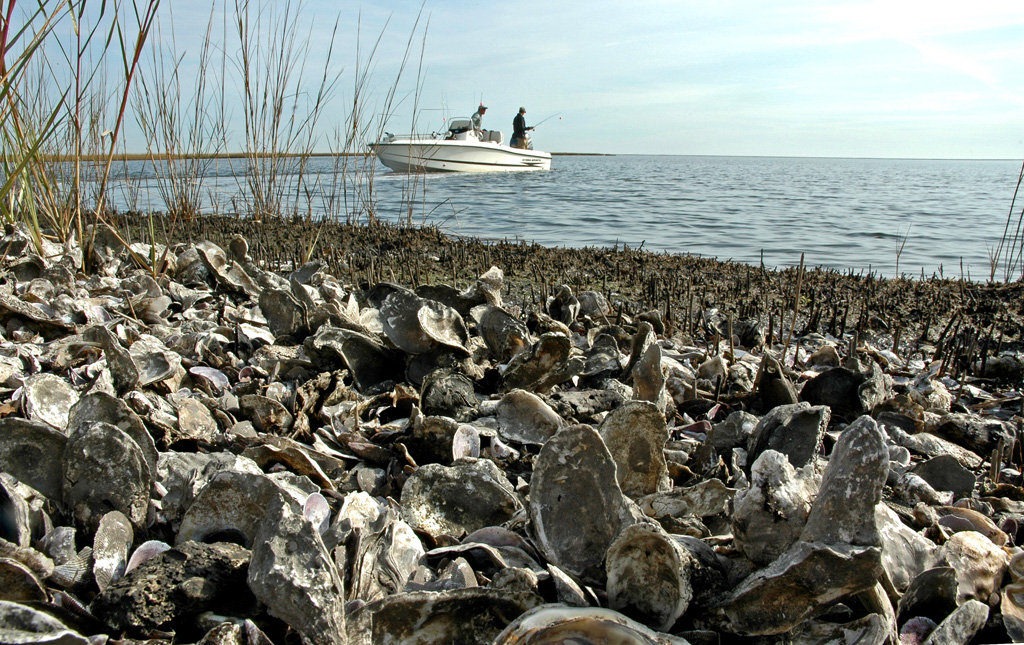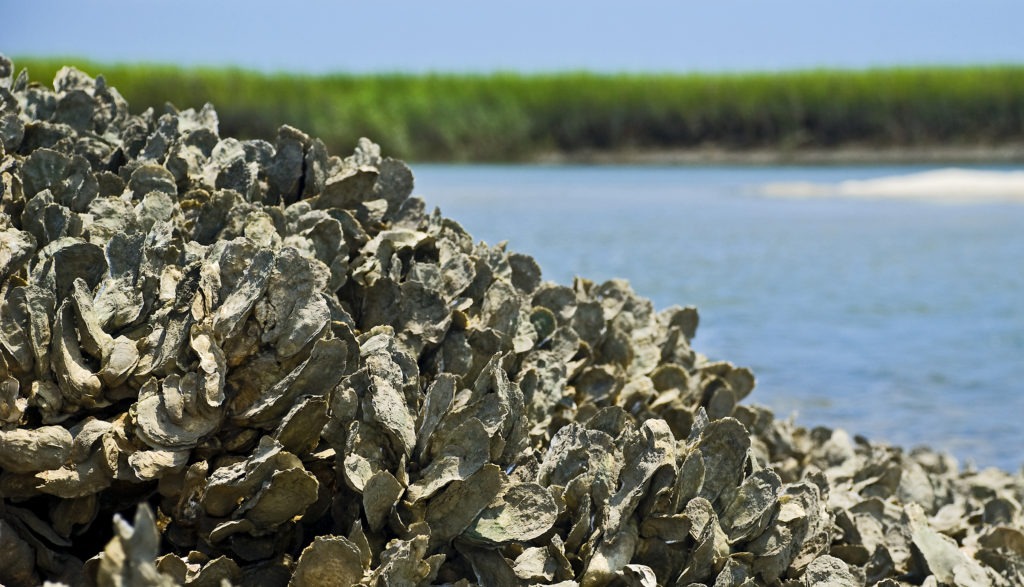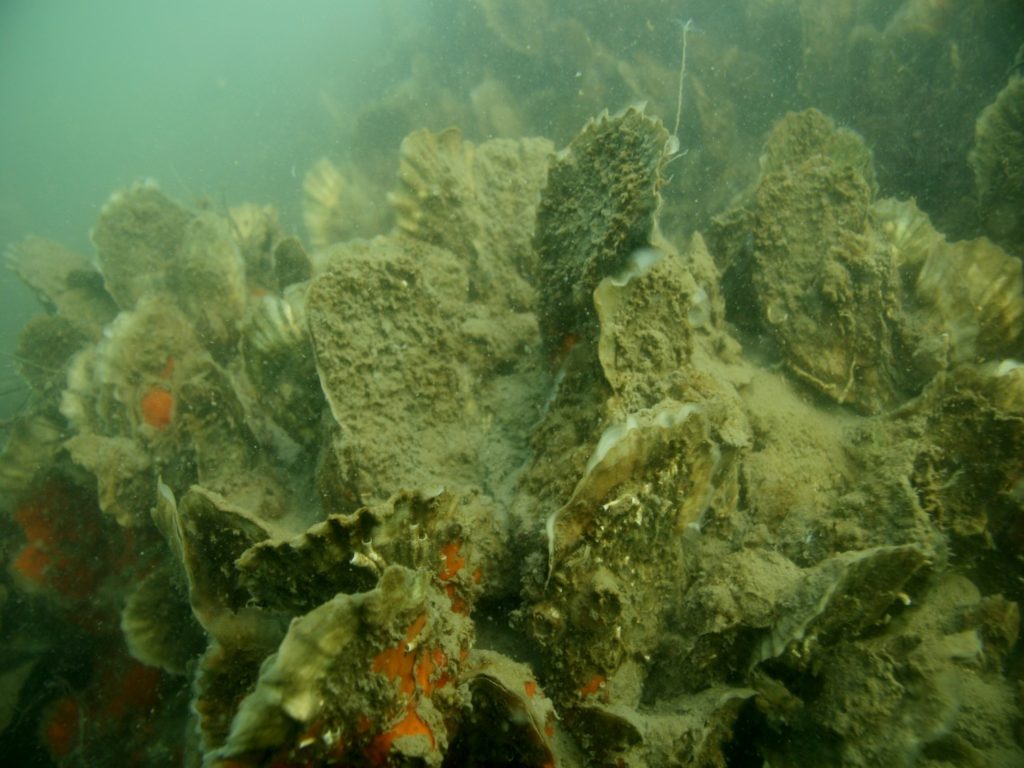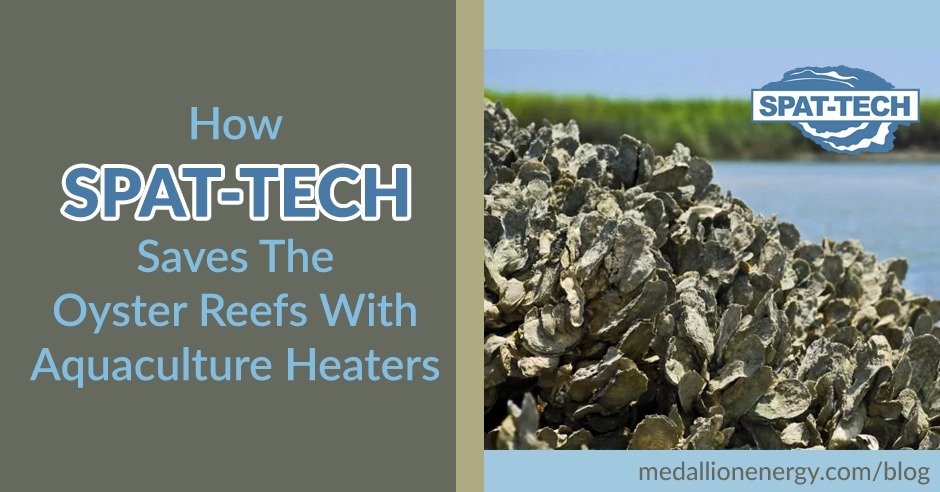The same kind of heat pumps that keep your swimming pool warm and cozy, also help restore the oyster population and repair coastal reefs. Companies like Spat-Tech use our heat pumps as Aquaculture heaters in their state of the art oyster hatchery.
And that’s just one of the ways heat pumps are used in Aquaculture. But in this post, we’re sharing exactly how big of an impact heat pumps can have in the Aquaculture industry. And how one company uses them to shape the future of an entire ecosystem.
How Spat-Tech Increases The Oyster Population With Aquaculture Heaters



What is aquaculture?
Before we jump into the good stuff, for those of you wondering, here’s a quick summary of aquaculture and what it involves.
The Aquaculture industry comprises the farming of fish, shellfish, crustaceans, aquatic plants, algae, and other aquatic organisms in both freshwater, and saltwater environments. Aquafarmers raise everything from salmon to seaweed in both outdoor nets and large indoor tanks, using Aquaculture heaters to control the temperature of the water.
A few major benefits of the Aquaculture industry include the alleviation of declining aquatic populations, restoration of ecosystems, increase in food accessibility, and job creation. And that’s where Spat-Tech comes in.
What is Spat-Tech?



Spat-Tech formed with the mission of saving the oyster population through the restoration of reefs in the coastal ecosystem. And they run the world’s largest, and most successful salt-water oyster hatchery.
Why the oysters?



Because they’re major contributors to the longevity and health of thriving coastal ecosystems. Oysters act as “natural filters”, and purify the water they absorb. And as part of oyster reefs, they provide habitats and food for a range of aquatic life — from fish and crabs, to wild birds and more.
Oyster reefs also preserve the coastlines by absorbing the energy of waves (up to 93% percent), and protect against erosion and land loss. For reference, 80,000 acres of coastal wetlands disappear annually — oyster reefs help prevent that.
But just as impressive, is how studies show that when the oyster population increases, the levels of nitrogen and harmful bacteria in the water decreases. A positive effect that reduces disease, and produces healthier fish, plants, and aquatic life all around.
That said, you may still be wondering about the role Spat-Tech plays in all of this…
What Spat-Tech does



Spat-Tech runs a “state-of-the-art, zero-discharge, environmentally friendly 90,000 square foot artificial salt water oyster hatchery.” And it’s the only one in the entire world.



The facility exists to combat the unpredictability of nature. Using a carefully-perfected approach, Spat-Tech places oyster spat (baby oysters) directly onto shells (substrate). And from there, they place them in large temperature controlled tanks, where they can safely develop without interruption.
They also replenish existing reefs, and build new ones by placing cultch (oyster shells) in strategic locations. And from there, they go the extra mile by seeding oysters directly onto the reefs themselves, which dramatically increases the success rate of population restoration — a major feat, since oysters can only spawn twice per year.



Before Spat-Tech stepped in, 85% of the global oyster population was functionally extinct. But now, that number is being reversed through the efforts and breakthroughs made by the company. Spat-Tech is restoring the coastline, and repairing the reefs, “one oyster at a time.”
How Spat-Tech uses our Aquaculture heaters to do this



Remember how we mentioned the temperature-controlled tanks that Spat-Tech uses?
They’re 40 ft long tanks, and each one holds up to 5 million oyster larvae. And they’re one of the most important aspects of Spat-Tech’s process.
It takes the larvae up to 3 days to set onto a shell. And during that time, the temperature and salinity of the water needs to be stable and consistent in order for that to happen.


 To accomplish this, Spat-Tech uses our Aquaculture heaters to control the water temperature of over 20 different tanks. By providing optimized environmental conditions, the company dramatically increases the success rate of the larvae. This ensures a smooth transition into the next step of the process — sending the baby oysters to the coastal nursery.
To accomplish this, Spat-Tech uses our Aquaculture heaters to control the water temperature of over 20 different tanks. By providing optimized environmental conditions, the company dramatically increases the success rate of the larvae. This ensures a smooth transition into the next step of the process — sending the baby oysters to the coastal nursery.
Once larvae have matured in the nursery, they’re relocated and set on the reefs. And from there, some really impressive stuff happens.
A closer look at Spat-Tech’s impact



At this point, it’s clear that Spat-Tech is doing major work to contribute to the restoration of the oyster reefs and coastal ecosystems. But some of you may still be wondering just how big of an impact they’re having.
To paint that picture, we sharing some impressive metrics straight from Spat-Tech:



- A single oyster filters up to 65,000 gallons of water per day (reducing contaminants, disease, and harmful bacteria)
- Spat-Tech adds at least 56 million oyster spat per acre for each spawn (oysters spawn twice annually)
- On a 100 acre reef, Spat-Tech’s oyster spat survival rate is 400 seed oysters per square meter
- For every 200,000 seed oysters placed, 13 million gallons of water are purified per day
- On a 100 acre reef, the oysters filter at least 13 billion gallons of water per day
- Oyster reefs are regulators of atmospheric CO2
Closing thoughts
The work of companies like Spat-Tech, through the repair of oyster reefs could very well be a major key to restoring the health of our aquatic ecosystems worldwide.
Oysters help reduce coastal land loss, decrease aquatic disease, and purify billions of gallons of water each day — the same water we rely on to sustain life on planet earth. And they provide sustenance and shelter for a wide range of wildlife, all while contributing to the economic growth of coastal communities and the Aquaculture industry.
We hope you enjoyed this post. You can learn more about Spat-Tech by visiting their website here.


